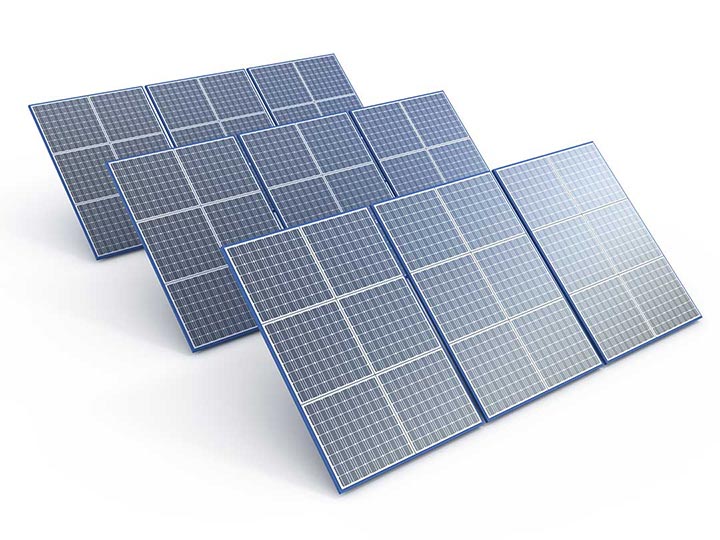How do you decide on the size of a solar PV system for your household? Many people believe that only energy-hungry households need large systems. But it turns out that bigger is better in almost every situation.
Financially, it may seem a waste to generate more electricity than you consume in your home. This energy is fed back (or exported) into the grid, and the retailers currently pay you 6c to 8c per kWh for it. But as the results below show, these exports add up to a surprising amount over time.
Forecasting financial returns on solar is difficult and requires making several assumptions. The assumptions and method used here are explained at the end of the article.
Let’s start by looking at a low energy use household, using 15 kWh of electricity per day.
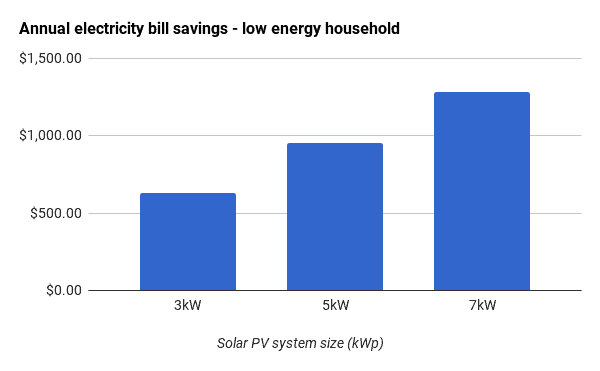
Even for low energy use households, larger PV systems provide greater savings on electricity bills. A 3kW system saves $630 per year, whilst a 7kW system saves nearly $1,300 per year.
But do these savings offset the extra cost of the larger PV system? It turns out they do, and then some.
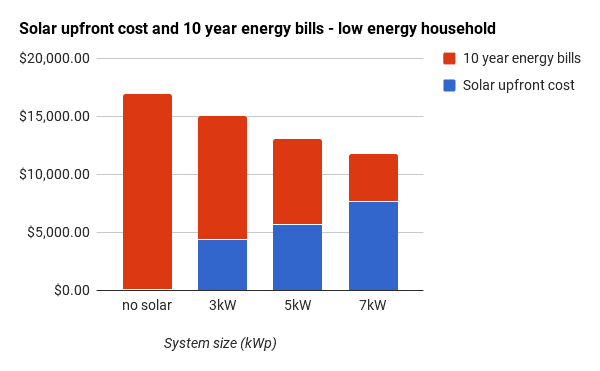
Over ten years the additional cost of the larger system is more than outweighed by the savings on electricity bills, even for low energy households.
Larger systems provide greater returns for medium and high energy use households too. And the savings are even more substantial.
Next let’s examine a medium use household using 25 kWh per day:
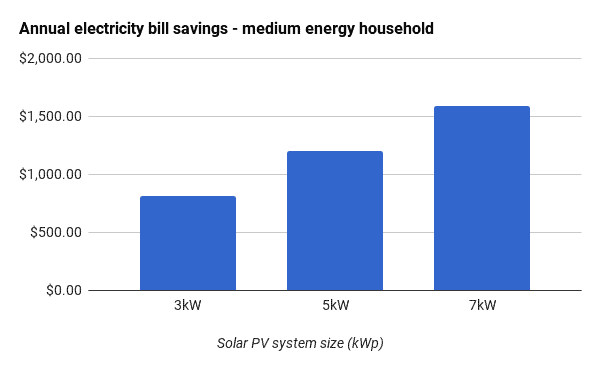
For a medium use household a 3kW system saves $815 per year, whilst a 7kW system saves over $1,600 per year.
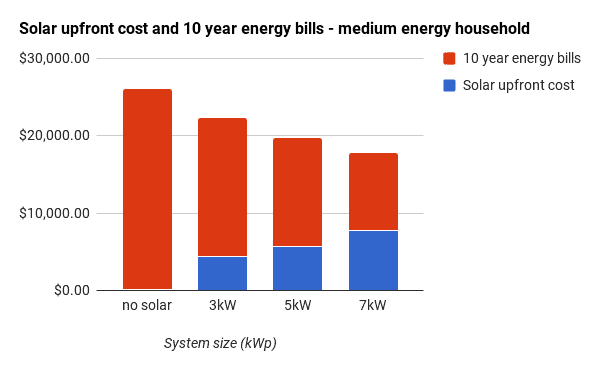
The trend continues: the larger systems results in greater savings over 10 years for a medium use household. In this case a 7kW system will save over $8,000 over ten years, even allowing for the upfront cost of the system.
Finally let’s check the numbers for a high use household using 35 kWh per day:
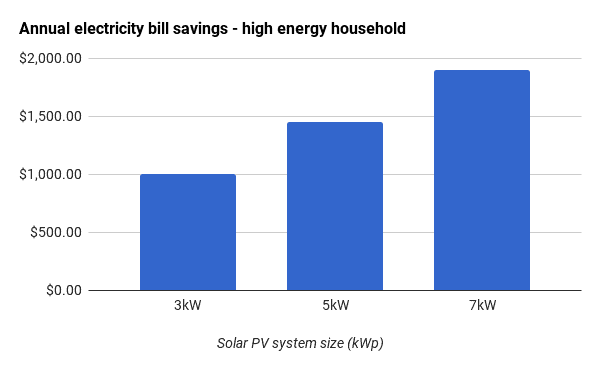
For high energy use households the annual bill savings are even greater: $1,000 for a 3kW system and $1,900 for a 7kW system.
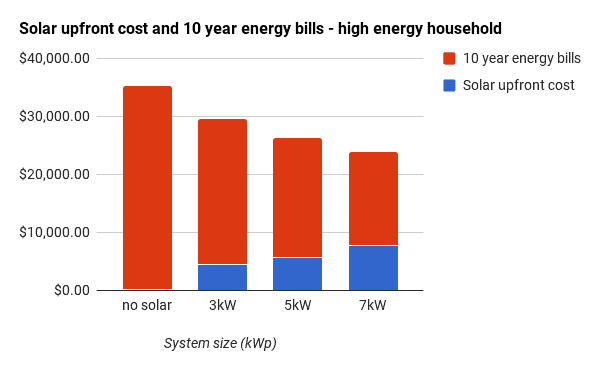
The savings over ten years are even more substantial for high use households: over $11,000 for a 7kW system.
Conclusion
Based on the assumptions used in this article, getting a larger system always provides greater savings over the long term, regardless of how much energy you use in your home. There’s no need to study your electricity bill – just get the largest system you can afford and have space on your roof for!
Larger systems also provide greater environmental benefit: every kWh they generate displaces dirty coal-fired power from the grid, whether that energy is self-consumed or exported. The more money you save, the more you help the environment! There aren’t many situations that can make the same claim.
Note: there may be limitations on the maximum system size you can get at your place. In particular, 5kW systems are usually fine, but anything larger will require permission from your local network operator. This permission is often granted so don’t let it hold you back.
Assumptions and Calculations
| Electricity tariff (per kWh) |
$0.25 |
| Feed-in tariff (per kWh) |
$0.08 |
| Daily connection cost (fixed) |
$0.90 |
These electricity rates come from Powershop’s current Standard Saver fixed-rate plan for NSW. If the calculations were done using green power tariffs the savings would be even greater.
The calculations assume that electricity prices do not change over ten years. This is very unrealistic of course – they will most likely rise significantly. Increases in electricity prices only improve the returns from solar and don’t change the conclusion that bigger is better.
| System size (kWp) |
3 |
5 |
7 |
| PV production (kWh / day) |
12 |
20 |
28 |
| Self-consumption rate |
30% |
40% |
50% |
Self-consumption rate is the portion of total consumption that is supplied by the solar. Eg if total consumption is 15kWh per day, for a 5kW system the assumed self-consumption amount is 6kWh per day (40% of 15kWh). Larger systems provide greater self-consumption because they generate more power at any given time, reducing the amount imported from the grid. The rates used here are based roughly on observations of real systems. Changing these rates impacts the amounts saved but does not alter the conclusion that larger systems provide greater returns.
The calculations assume the same energy production and consumption throughout the year. This is not realistic, but using average figures over the year should not alter the results enough to change the general trends.
The up-front costs of the systems are based on the prices from the Sunny Shire bulk buy.

